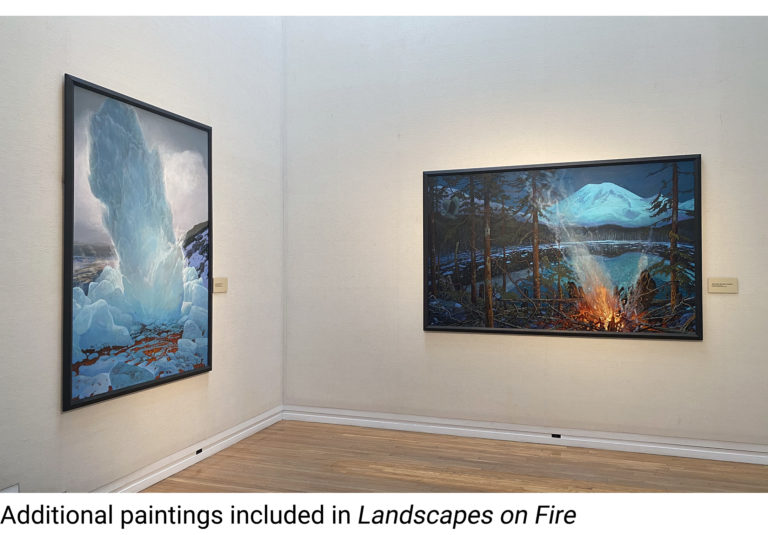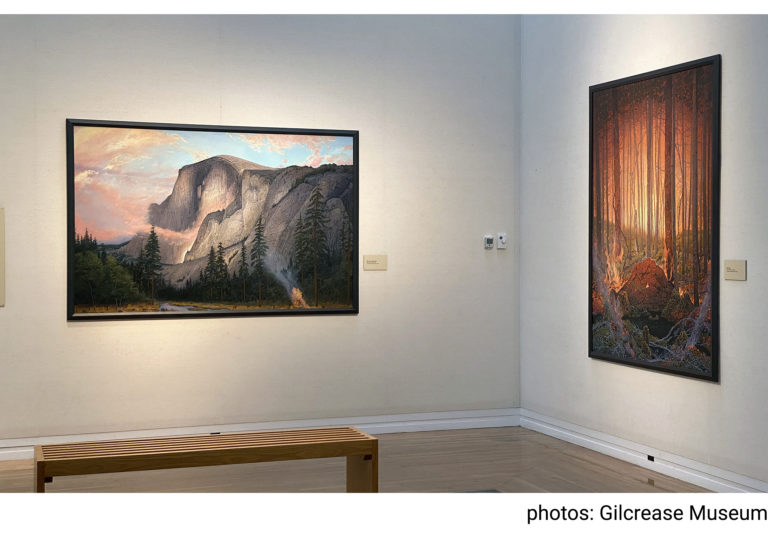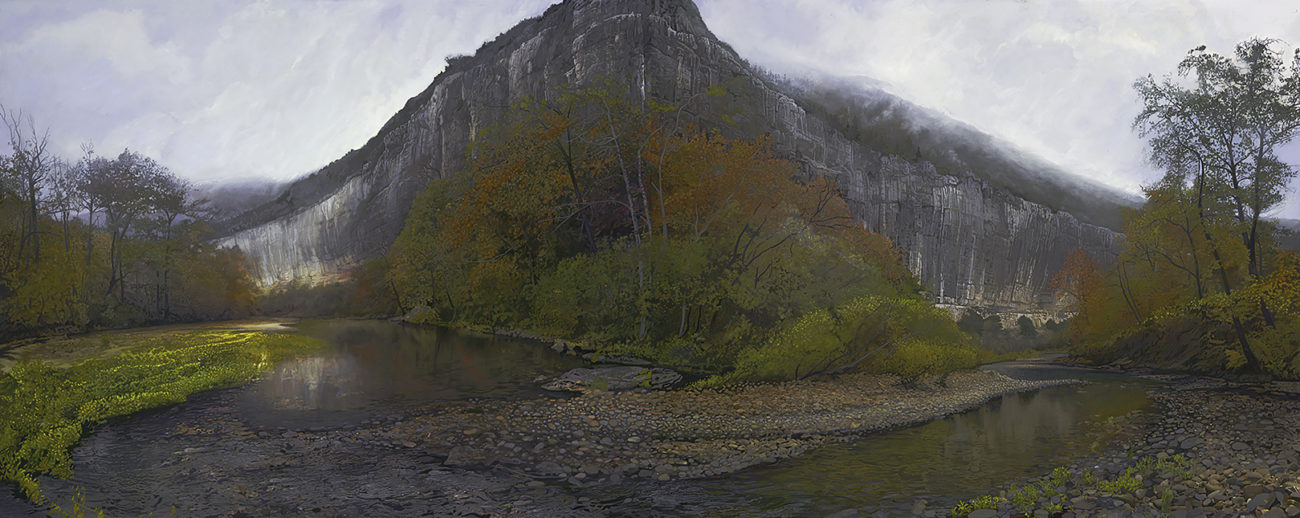Michael Scott’s landscape paintings transport the viewer to the exact site he has sought to capture. Vibrant, energetic patterns of nature’s forces create each composition. Tia Collection is fortunate to have acquired a number of Michael’s paintings over the years, but none are as large and commanding as Buffalo River (illustrated above.) We are pleased to contribute our painting to the Gilcrease Museum in their presentation of Landscapes on Fire: Paintings by Michael Scott.
The Gilcrease Museum is the perfect location for this exhibition. In addition to the museum’s dramatic setting in Tulsa, Oklahoma, up high on a hill overlooking the city, the collection includes more than 350 years of American paintings, sculptures and works on paper, including one of the largest public holdings of art of the American west. With Michael’s contemporary style and dramatic flare, it is easy to see his contribution to western landscape painting when set in an institution with a deep archive of classic works.
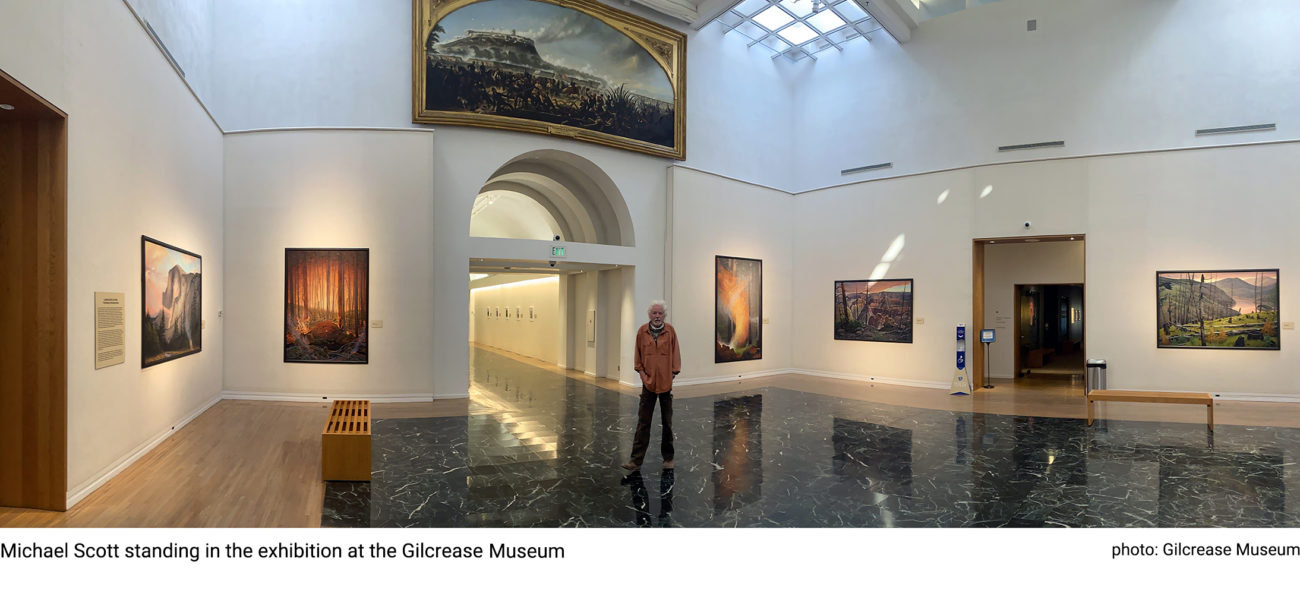
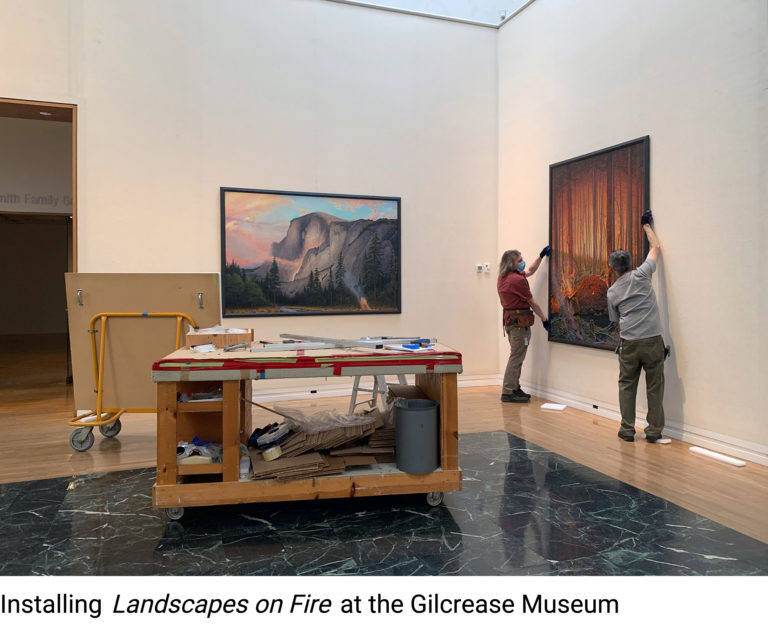
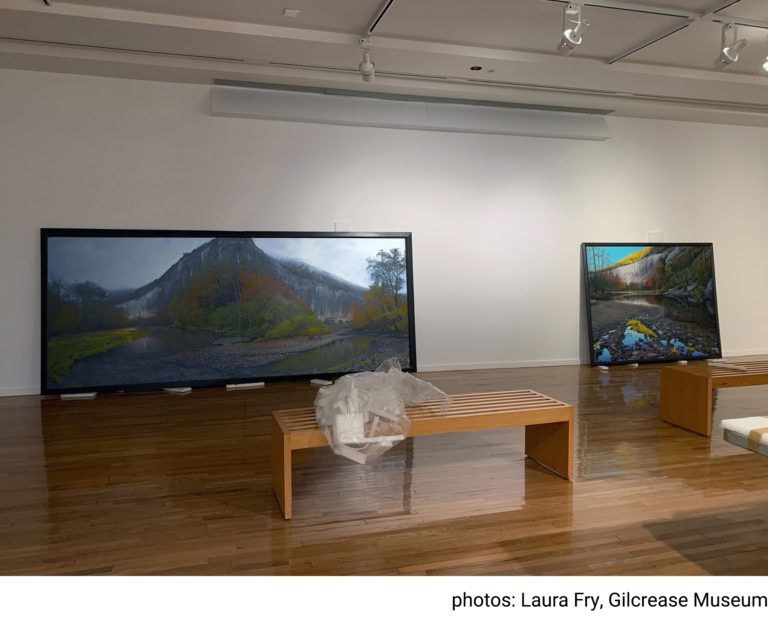
Landscapes On Fire
-Laura F. Fry, Senior Curator & Curator of Art, Gilcrease Museum
As a force of nature, fire contains immense power to create and destroy. But fire also heals. From the Sierra Nevada Mountains in California to the Tallgrass Prairie in Oklahoma, naturally occurring fires are part of a healthy ecosystem. In large-scale paintings of the American landscape, artist Michael Scott (born 1952) explores these elemental, uncontrollable forces of the natural world: fire, ice, and water. This exhibition is part of Scott’s ongoing series Preternatural, meaning beyond what is normal or natural, existing outside of nature. Scott creates his large landscapes over multiple years, often returning to a painting over time to add and edit details. The immense paintings are paired with examples of Scott’s field studies: small oil sketches created onsite, capturing the mood and color of the changing landscape with rapid brushstrokes.
Inspired by 19th-century landscape artists like Thomas Moran, Scott creates images that speak to human relationships with nature. Small fires imply a human presence—are these campfires, bringing comfort on a cold night, or the small sparks that will grow to bring down an entire forest? Some paintings reveal both the dangerous destruction and beautiful radiance of a woodland blaze, while others show a fire’s aftermath—with torched, skeletal snags looming over newly verdant meadows. Beyond fires, Scott’s Preternatural series also shows the effects of water and ice on the land, in the hollowed cliffs along Arkansas’s Buffalo River and the interplay between winter snowdrifts and steaming geysers in Yellowstone National Park.
By portraying constant shifting environments, Scott invites viewers to consider humanity’s responsibility for our rapidly changing climate. With his contemporary homage to the American landscape, Scott explores the surreal power and fragile beauty of the land, and encourages respect for the unknowable, elemental forces of nature.
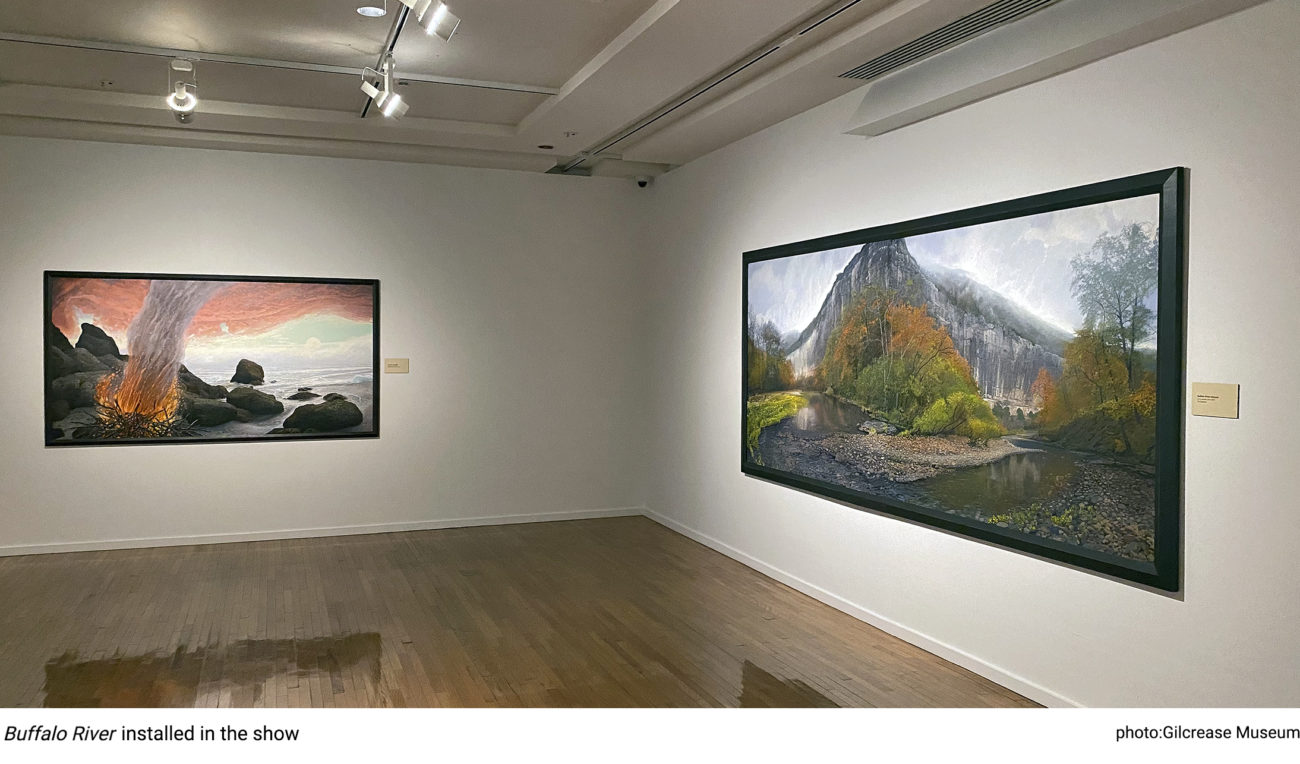
The landscape for me is an invitation to enter the realm of the preternatural ---a world of stillness, reflection and phenomena, far removed from the mundane activities of daily life. Logic and reason are at times suspended while painting in this conversation with nature. The cold facts of the physical world cannot be more dissimilar to the pure sensations derived from our wild places. These are the elements I seek as a painter, not to restrict the landscape to a simple imitation but to participate in a conversation of the unknowing.
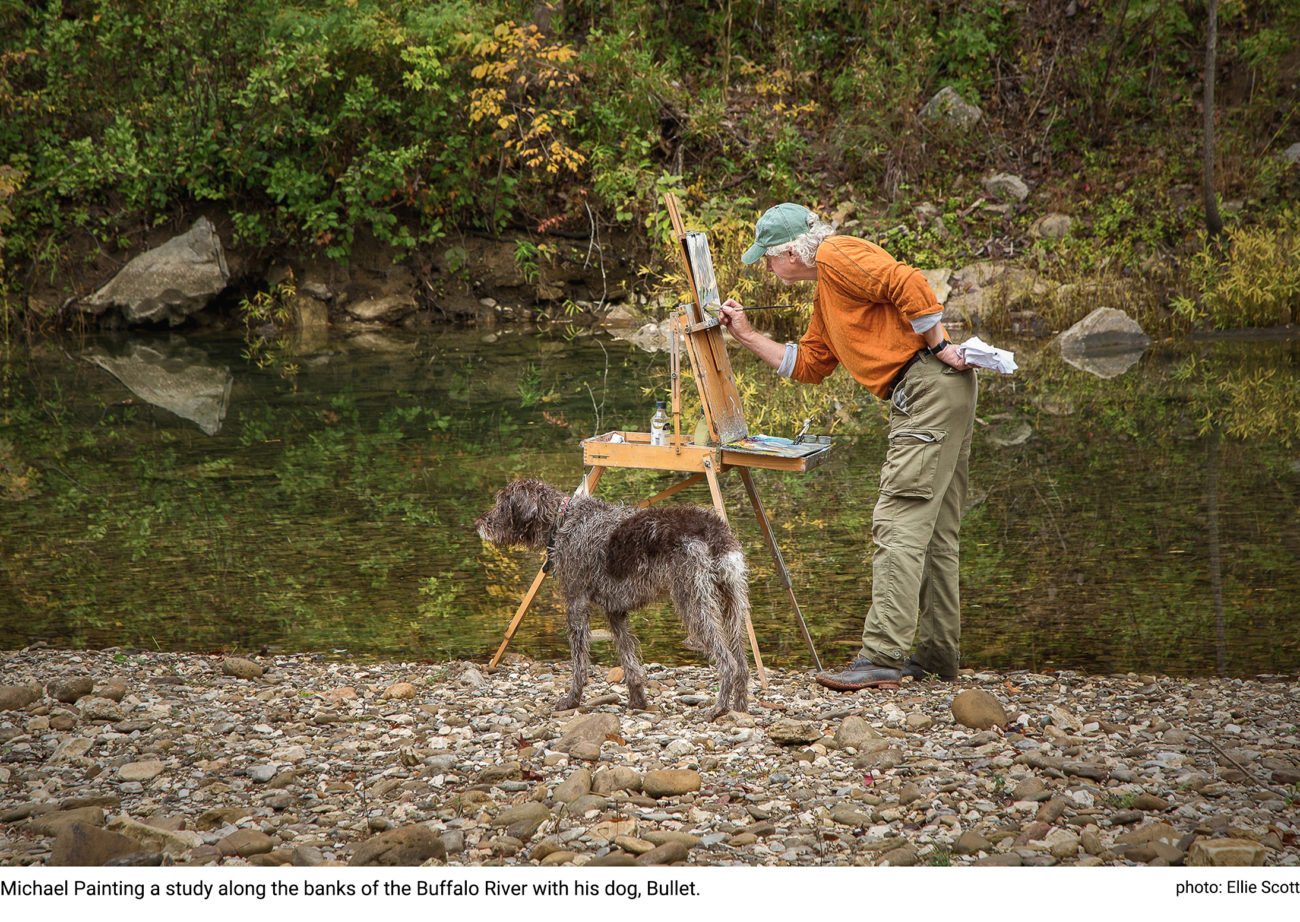
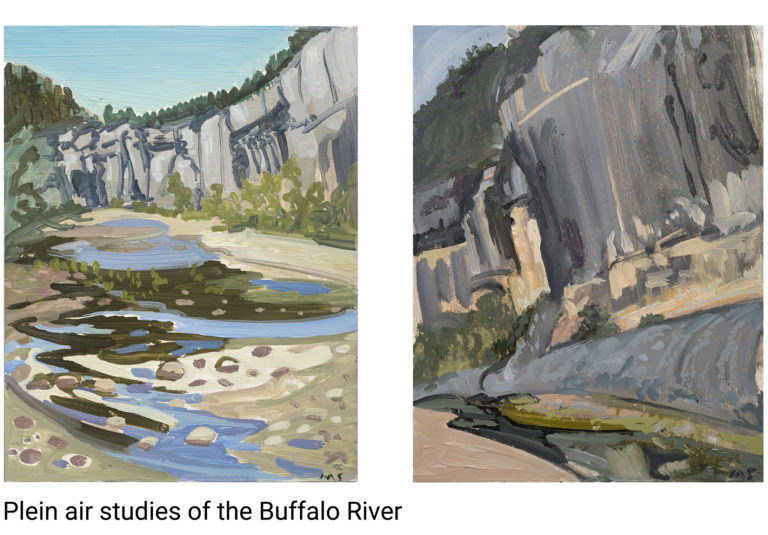
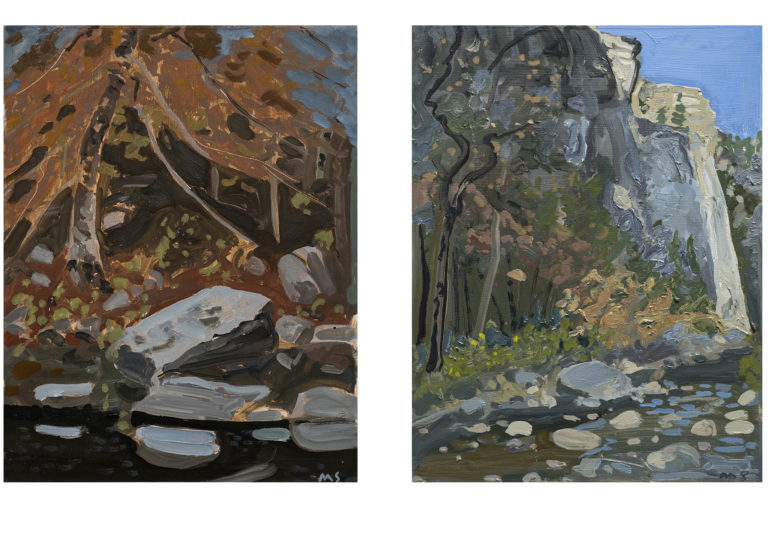
Thoughts on the Buffalo River from the artist
In one drop of water are found all the secrets of all the oceans; in one aspect of you are found all the aspects of existence
– Kahlil Gibran, poet and author
The Buffalo River, dating back some 480 million years, has the distinct honor of being designated as the only river in America to receive the title of National Park. As with all the elements, water is both symbolic and paradoxical, signifying both positive and negative outcomes. Its’ power can destroy or symbolize renewal as found in Baptism.
One thing is certain however, without water there is no life.
In late fall, it is possible to walk the Buffalo River with its mirrored reflecting pools, brilliant colors and morning mist. In this depiction of the Buffalo, I try and represent the very passive activity of walking its’ rhythmic banks and riverbed. Its’ towering bluffs serve as a perfect amphitheater backdrop for its’ audience, playing out our mother earth’s mysteries and instilling curiosities into the secrets its’ silent performance provides. A timeless place for discoveries, both internal and external, one need not have a canoe to be part of this journey.
There has been a long history in American Art of using the landscape as metaphor for spiritual purpose and this cathedral landscape is no exception. The Buffalo provides nourishment and meanings, raising questions about sacredness and what we deem sacred, reminding us all of our interconnectedness and our place in the natural world.
